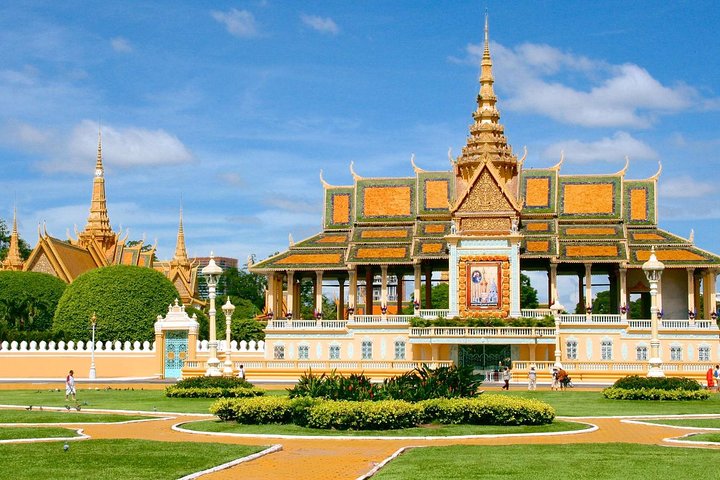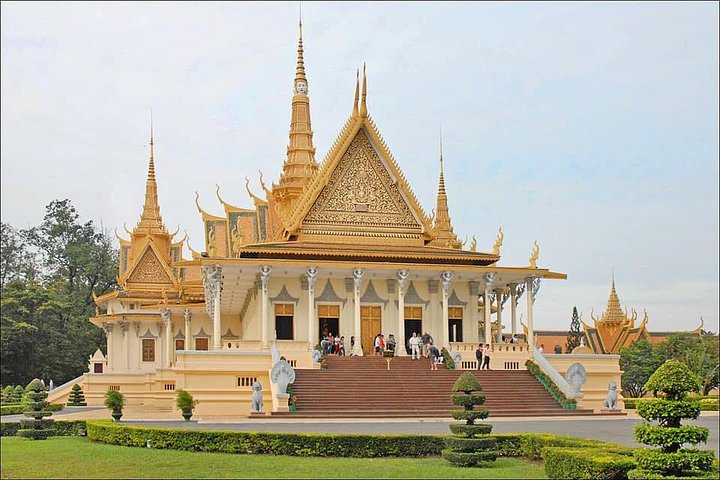Exploring the Depths of History: A Half Day in Phnom Penh
Intrigued by the profound history of Cambodia, I embarked on a half-day tour in Phnom Penh to explore the Tuol Sleng Genocide Museum and the Choeung Ek Genocidal Center. What I discovered was a deeply moving experience that offered a glimpse into the resilience of the Cambodian people.
A Journey Through History: The Tuol Sleng Genocide Museum
As I stepped into the Tuol Sleng Genocide Museum, I was immediately struck by the somber atmosphere that enveloped the former school. The walls, once echoing with the laughter of children, now stood as silent witnesses to the horrors that unfolded within. My guide, a knowledgeable and compassionate individual, led me through the exhibits, each one more haunting than the last. The museum, once known as S-21, was the most notorious of the 189 interrogation centers in Cambodia. It was here that between 14,000 and 17,000 prisoners were detained and tortured, often in primitive brick cells built in former classrooms.
The guide’s explanations were both informative and deeply moving, providing context to the photographs and artifacts that lined the walls. As someone who has spent years exploring the rich tapestry of Asian cultures, I found myself reflecting on the resilience of the Cambodian people. Despite the darkness of this period, their spirit and determination to remember and honor the victims shone through. The museum is not just a place of remembrance but a testament to the strength of the human spirit.
The Choeung Ek Genocidal Center: A Place of Reflection
A short drive from the city, the Choeung Ek Genocidal Center stands as a stark reminder of the atrocities committed during the Khmer Rouge regime. Once an orchard and a Chinese cemetery, it was transformed into what became known as the killing fields. Here, around 20,000 victims were executed, and over three years, 2.5 million people were massacred and buried.
Walking through the fields, I was enveloped by a profound sense of sorrow and reflection. The memorial stupa, filled with the skulls of the victims, serves as a chilling reminder of the past. Yet, amidst the sadness, there is a sense of peace and reverence. The Cambodian people have created a space that not only honors the victims but also educates future generations about the importance of remembering history.
As I stood there, I couldn’t help but think of the many cultures I’ve encountered in my travels. Each one, with its unique history and traditions, teaches us something valuable about the human experience. The Choeung Ek Genocidal Center is a poignant reminder of the need for understanding and empathy in a world that often forgets its past.
Embracing the Lessons of the Past
The half-day tour in Phnom Penh was more than just a historical excursion; it was a journey into the depths of human resilience and the power of remembrance. As someone deeply invested in understanding and sharing the cultural narratives of Asia, this experience was both humbling and enlightening.
The stories of the victims, the resilience of the survivors, and the dedication of the Cambodian people to preserve their history left a lasting impression on me. It reminded me of the importance of mindfulness and respect for the past, values that are deeply ingrained in many Asian cultures.
For those who seek to understand the complexities of history and the strength of the human spirit, I highly recommend the Half Day Tour in Phnom Penh. It is a journey that will leave you with a deeper appreciation for the resilience of the Cambodian people and the lessons we can learn from their past.








































